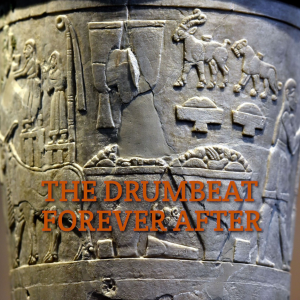
The Drumbeat Forever After
History Podcasts
A podcast focusing on the Bronze Age in the Near East, from the development of agriculture during the Neolithic to the collapse of the Late Bronze Age world system at the end of the second millennium BCE and everything in between. Every episode also includes a look at a particular myth or ancient text. Episodes 1, 17, and 31 are good places to start.
Location:
United States
Genres:
History Podcasts
Description:
A podcast focusing on the Bronze Age in the Near East, from the development of agriculture during the Neolithic to the collapse of the Late Bronze Age world system at the end of the second millennium BCE and everything in between. Every episode also includes a look at a particular myth or ancient text. Episodes 1, 17, and 31 are good places to start.
Language:
English
41: Presargonic Lagash & Girsu, 2500-2300 BCE (Hymns to Nanshe)
Duration:01:17:14
40: Royal Tombs of Ur, 2600-2400 BCE (The death of Gilgamesh)
Duration:00:56:10
Help save Aseel! + Update on the show & beveled-rim bowls
Duration:00:05:52
39: Temples of Early Dynastic Nippur, 2900-2300 BCE (Enlil & Ninlil)
Duration:00:45:18
38: Abu Salabikh and the first Semitic-language literature, 2600-2500 BCE (Debate between two women, Lugalbanda & Ninsuna)
Duration:00:54:00
37: The decline & fall of Kish, 2600-2300 BCE (Hymn to Shamash, Kesh temple hymn)
Duration:00:49:14
36: Eridu at the dawn of time: interview with Karrar Sabah
Duration:00:21:57
35: Shuruppak & the first Sumerian literature, 2600-2500 BCE (Instructions of Shuruppak)
Duration:00:59:04
34: The Lower Diyala & the foundation of Mari, 2900-2600 BCE (Ningishzida’s journey to the nether world)
Duration:00:48:28
6: Çatalhöyük, the Domuztepe death pit, & Late Neolithic Anatolia, 7400-5500 BCE (Nergal & Ereshkigal)
Duration:00:42:45
33: The golden age of Kish, 2900-2600 BCE (Gilgamesh vs Aga of Kish)
Duration:01:25:48
32: Early Sumerians in Ur, 2900-2600 BCE (Gilgamesh vs the Bull of Heaven)
Duration:01:00:32
31: Introduction to Early Dynastic Sumer (& the historical Gilgamesh), 2900-2350 BCE (Gilgamesh vs Huwawa, version B)
Duration:00:55:39
30: Waterways of early Mesopotamia: interview with Malath Feadha & Jaafar Jotheri
Duration:00:36:04
Update: Rewrites, re-records, & Early Dynastic Sumer
Duration:00:03:27
MOSTLY NEW: Late Uruk expansion outside Iran, 3400-3100 BCE (Enmerkar & the lord of Aratta, part 2)
Duration:00:51:17
MOSTLY NEW: Late Uruk Iran & Uruk influence on Egypt, 3400-3100 BCE (Enmerkar & the lord of Aratta, part 1)
Duration:01:07:12
PARTIALLY NEW: The fall of Tell Brak & the Middle Uruk expansion, 3800-3400 BCE (Enmerkar vs Ensuhkeshdanna)
Duration:00:55:21
28: Temples & language during the Jemdet Nasr period (Lugalbanda, part 3)
Duration:00:03:27
27: Cities during the Jemdet Nasr period (Lugalbanda, part 2)
Duration:00:48:06